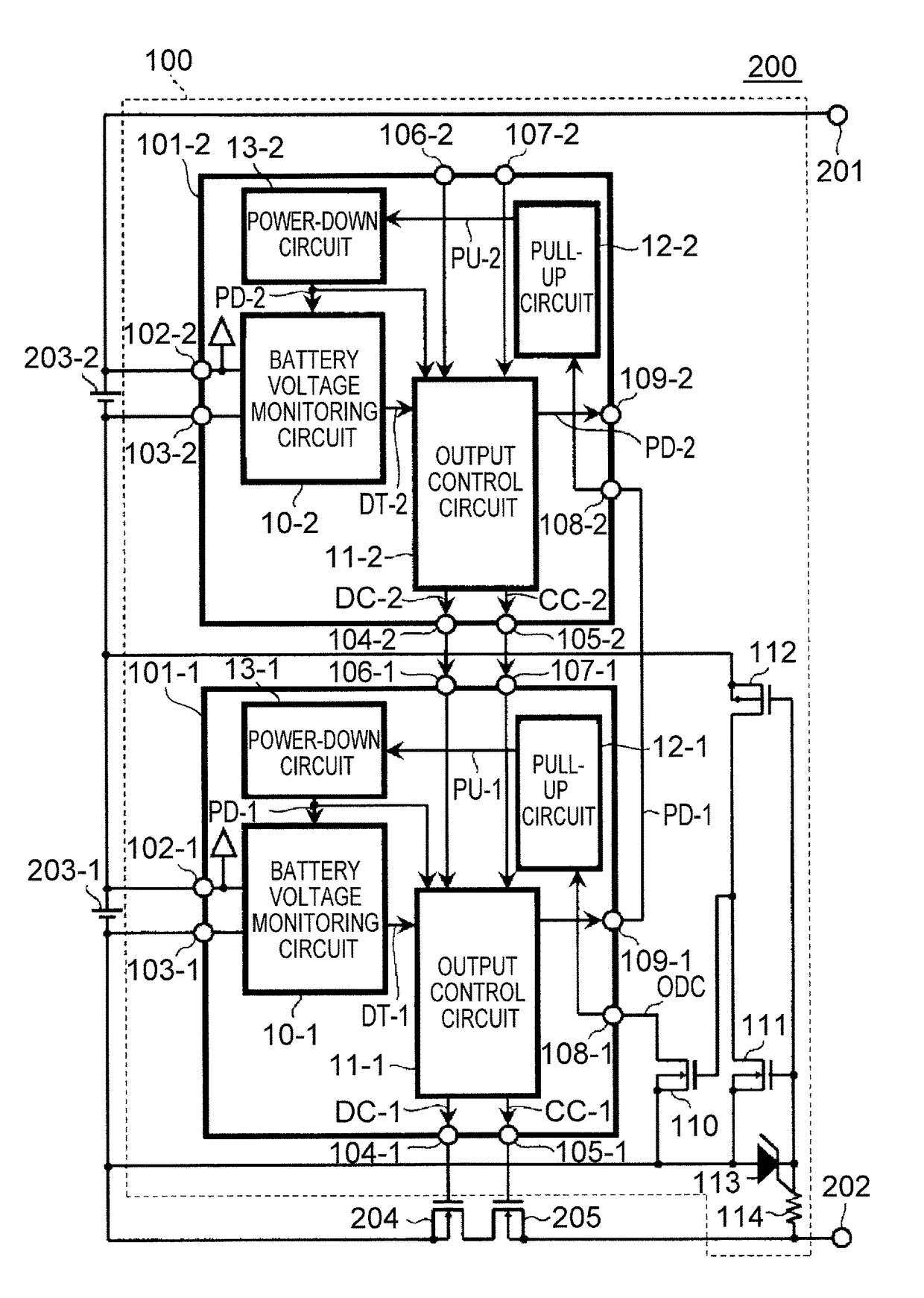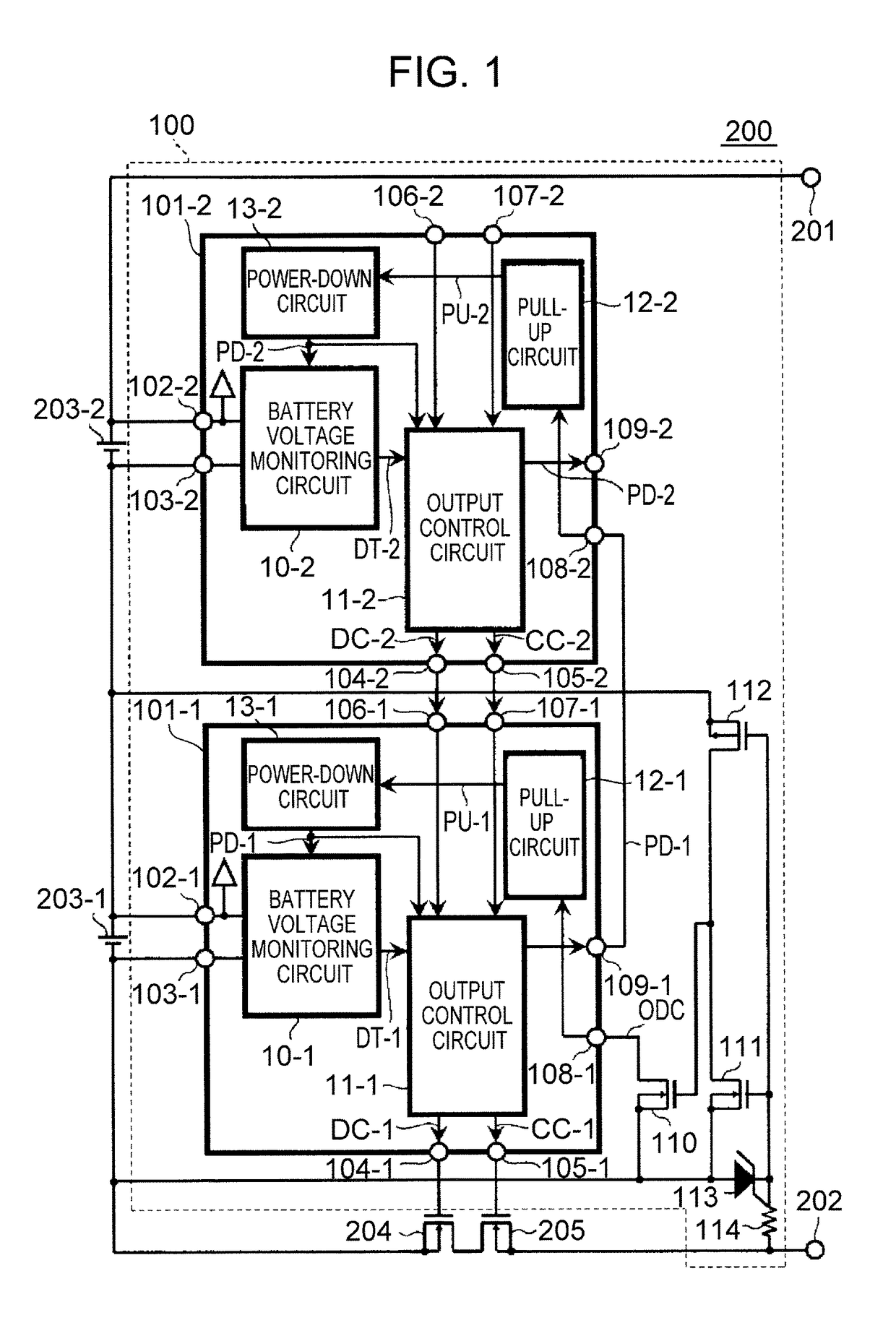Charging/discharging control circuit, charging/discharging control device, and battery apparatus
a control circuit and control device technology, applied in safety/protection circuits, electrochemical generators, transportation and packaging, etc., can solve the problems of high cost and complex circuits of battery apparatus, and achieve the effect of suppressing costs and preventing an increase in the number of components
- Summary
- Abstract
- Description
- Claims
- Application Information
AI Technical Summary
Benefits of technology
Problems solved by technology
Method used
Image
Examples
Embodiment Construction
[0029]A preferred embodiment of the present invention will hereinafter be described with reference to the accompanying drawings.
[0030]FIG. 1 is a circuit diagram illustrating a battery apparatus 200 according to the embodiment of the present invention.
[0031]The battery apparatus 200 according to the embodiment of the present invention is equipped with external terminals 201 and 202 between which a charger or a load is connected, two secondary batteries 203-1 and 203-2 connected in series between the external terminals 201 and 202, a discharging control switch 204 and a charging control switch 205 each comprised of an Nch transistor, and a charging / discharging control device 100. The charging / discharging control device 100 is equipped with charging / discharging control circuits 101-1 and 101-2 respectively connected to the secondary batteries 203-1 and 203-2.
[0032]The charging / discharging control circuit 101-1 is configured so as to be equipped with a battery voltage monitoring circui...
PUM
| Property | Measurement | Unit |
|---|---|---|
| voltage | aaaaa | aaaaa |
| constant current | aaaaa | aaaaa |
| current | aaaaa | aaaaa |
Abstract
Description
Claims
Application Information
 Login to View More
Login to View More - R&D
- Intellectual Property
- Life Sciences
- Materials
- Tech Scout
- Unparalleled Data Quality
- Higher Quality Content
- 60% Fewer Hallucinations
Browse by: Latest US Patents, China's latest patents, Technical Efficacy Thesaurus, Application Domain, Technology Topic, Popular Technical Reports.
© 2025 PatSnap. All rights reserved.Legal|Privacy policy|Modern Slavery Act Transparency Statement|Sitemap|About US| Contact US: help@patsnap.com



